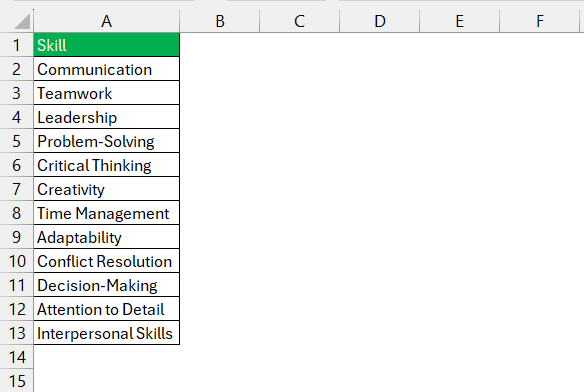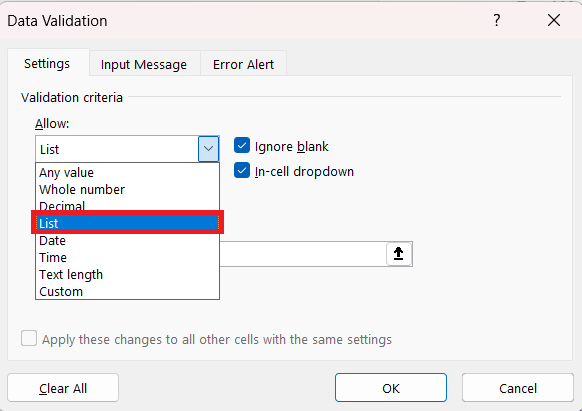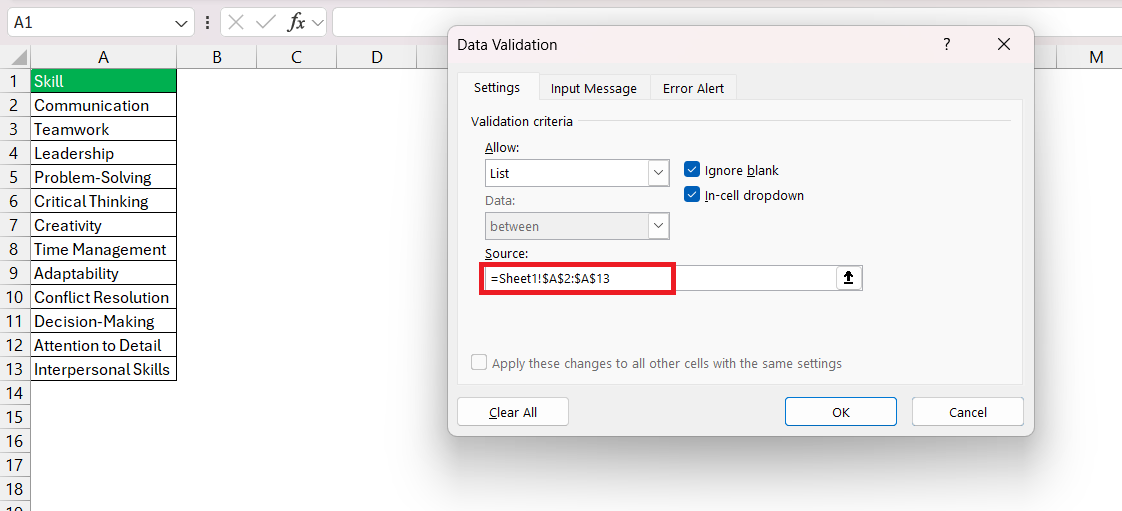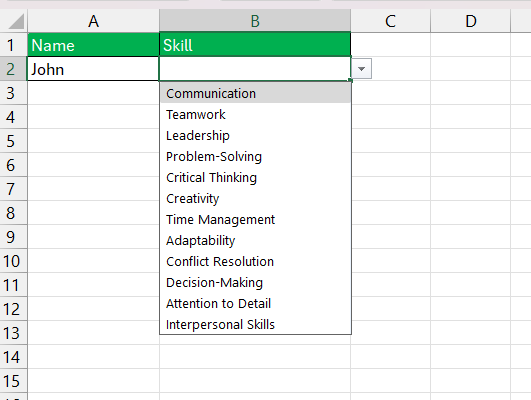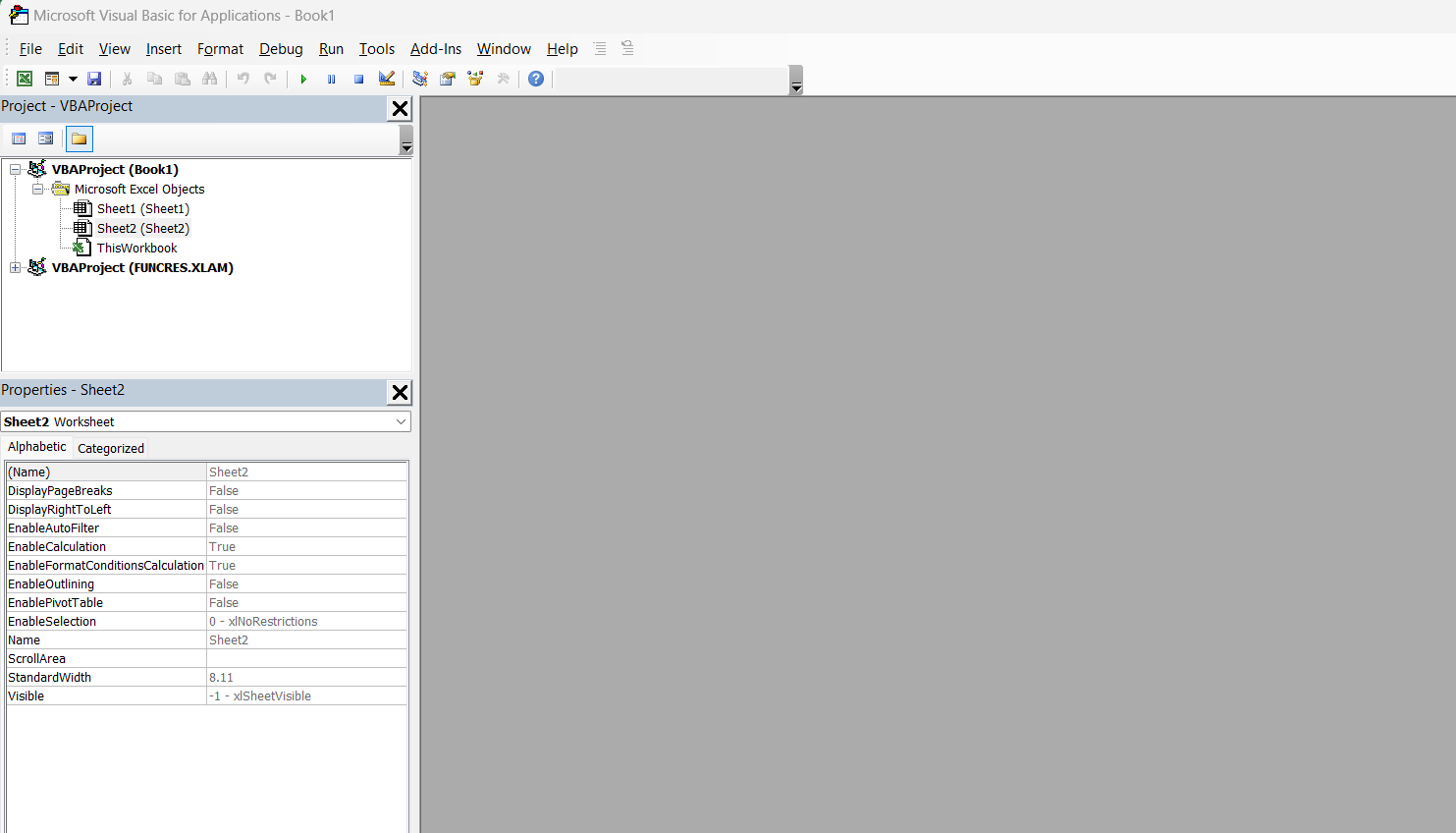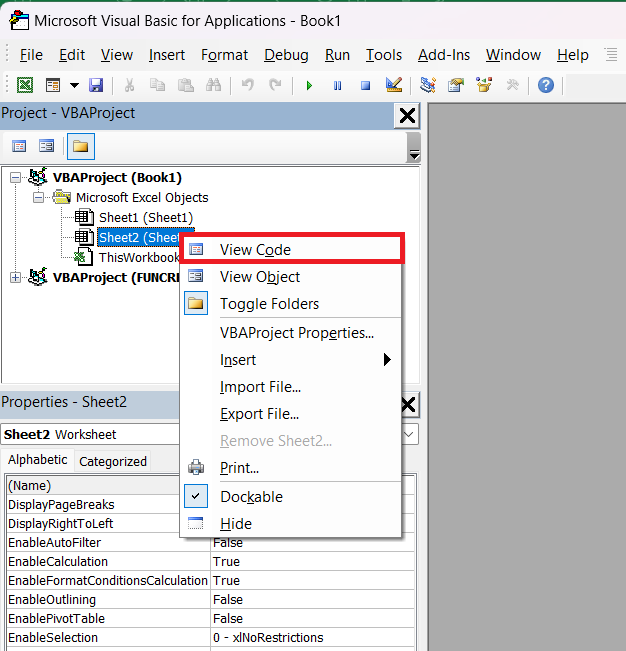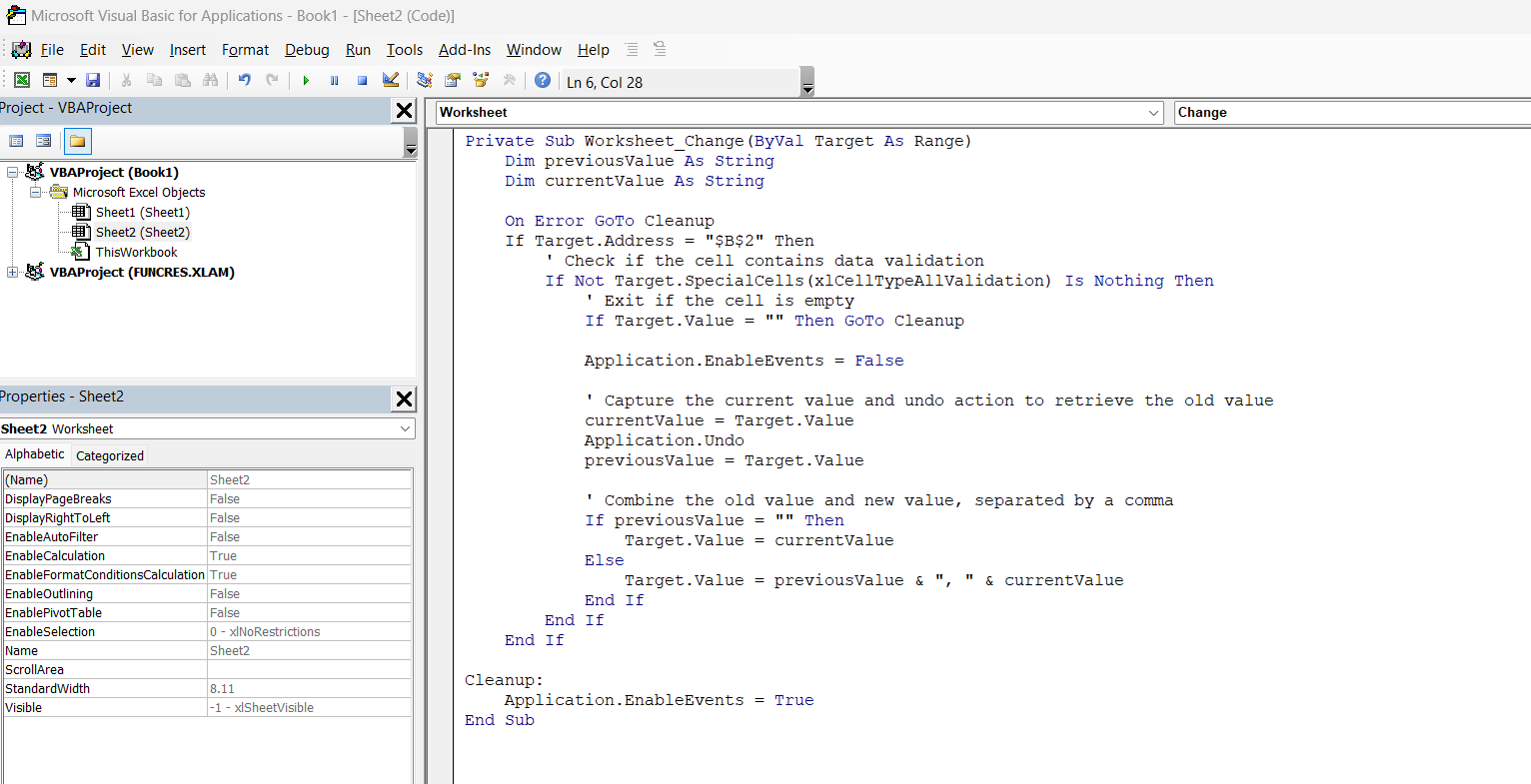Excel has long been my go-to tool for managing data, and one of its most versatile features is the dropdown list. But what if you need a dropdown that allows multiple selections? While Excel doesn’t offer this out of the box, I’ve found a simple way to achieve it using VBA (Visual Basic for Applications). Let me walk you through the steps on how to create drop down list in Excel with multiple selections.
Key Takeaways:
- Multi-select dropdown lists in Excel allow the selection of multiple values in a single cell, making them ideal for tasks like assigning multiple team members or categorizing data efficiently.
- Creating a clean, organized list of unique values ensures the dropdown functions correctly and avoids errors during the data validation process.
- By using VBA scripts, you can extend Excel’s capabilities, allowing cells to accept multiple selections and dynamically update content.
- Multi-select dropdowns save time, reduce errors and enhance data entry accuracy, especially in business contexts, leading to better decision-making.
- Multi-select dropdowns empower advanced data analysis by simplifying multi-criteria filtering and sorting, enabling swift and insightful reporting.
Table of Contents
Unveiling the Excel Multi-Select Wizardry
Why Use Multi-Select Dropdown Lists?
Multi-select dropdown lists in Microsoft Excel are a tremendous tool when I need to input versatile data without constraints. I’ve found them exceptionally useful in scenarios where the standard single-selection dropdowns simply don’t suffice.
For instance, when assigning multiple team members to a project task or tracking staff availability for an event, multi-select dropdown lists can provide the necessary flexibility. They also enhance data input quality by minimizing mistakes often introduced through manual entries.
Laying the Groundwork for Your Drop-Down List
Prepare Your List of Options
Properly preparing the list of options is the critical first step in creating a multi-select dropdown list. In my experience, ensuring that the list is well-organized makes the whole process smoother down the line. Start by consolidating all potential selections into a single column, located in either the same worksheet or a separate one specifically for data storage.
It’s vital to have unique and relevant entries without duplicates because this helps avoid confusion and errors when selections are made.
When I prepare my options, I make certain there are no blank cells within the range, as these can interrupt the data validation process, hindering the functionality of the dropdown list. A cleanly organized list is essential for maintaining the ease of use and dependability of the multi-select dropdown.
Setting Up Data Validation for Your List
When setting up data validation for your list, it’s crucial to ensure the integrity of the data that users can input into your Excel sheet. To do so, I use Excel’s built-in data validation feature to create a dropdown list from a dedicated range of cells. Here’s what I typically do:
STEP 1: In the cell where I want the dropdown list, I head over to the Data tab on the Ribbon and select ‘Data Validation.’
STEP 2: On the Settings tab, I choose ‘List’ in the Allow box to enable the dropdown feature.
STEP 3: Finally, I input the range of cells containing my list items in the Source box, or type them manually, separated by commas if they’re not too many.
A dropdown will be created with the skill listed by us.
By carefully setting up data validation, I can prevent unauthorized or incorrect data from being entered, thereby maintaining the accuracy and reliability of my data.
How to Create Drop Down List in Excel with Multiple Selections
Inserting VBA Code for Extended Functionality
To create the multi-select magic, I delve into Excel’s VBA (Visual Basic for Applications) capabilities. I access the code editor by pressing Alt + F11 and insert the necessary VBA script into the sheet module where the dropdown is located.
The VBA code is designed to catch events where a cell changes, specifically where the dropdown list is used. Once the cell detects a change, the code allows additional items to be selected or deselected while updating the cell’s content with each modification.
Here’s a general guideline I follow:
STEP 1: Right-click the sheet tab, select ‘View Code’, and a VBA editor window opens up.
STEP 2: Paste the pre-written VBA script into the editor.
Private Sub Worksheet_Change(ByVal Target As Range) Dim previousValue As String Dim currentValue As String On Error GoTo Cleanup If Target.Address = "$B$2" Then ' Check if the cell contains data validation If Not Target.SpecialCells(xlCellTypeAllValidation) Is Nothing Then ' Exit if the cell is empty If Target.Value = "" Then GoTo Cleanup Application.EnableEvents = False ' Capture the current value and undo action to retrieve the old value currentValue = Target.Value Application.Undo previousValue = Target.Value ' Combine the old value and new value, separated by a comma If previousValue = "" Then Target.Value = currentValue Else Target.Value = previousValue & ", " & currentValue End If End If End If Cleanup: Application.EnableEvents = True End Sub
STEP 3: Close the VBA editor by pressing Alt + Q.
VBA is now actively waiting to execute every time I interact with the cell containing my dropdown list.
It’s essential to save the workbook with macro capabilities, making it a .xlsm file to ensure the VBA script runs without hitches.
Additional Tips
- Clearing a Selection: To clear a cell, just delete the content as usual.
- Customize the Separator: If you prefer a different separator (e.g.,
;), modify the& ", " &part of the code.
Utilizing Multi-Select Dropdowns in Real-World Scenarios
The Business Benefits of Efficient Data Entry
Incorporating multi-select dropdowns in business spreadsheets has transformed how we manage and enter data across various departments. The streamlined workflow directly translates to time savings, as team members select multiple relevant options with just a few clicks, bypassing the tedium of manual entry.
From a management perspective, these lists significantly reduce the risk of data entry errors — a common and costly issue in many business processes. As data accuracy improves, so does the quality of the insights drawn from that data, leading to better-informed decision-making.
Moreover, the increased speed of data categorization and filtering saves hours that can be redirected toward more strategic tasks. This efficiency boost is a key player in mitigating bottlenecks, thereby accelerating project timelines and enhancing overall organizational productivity.
Advanced Data Analysis with Multi-Select Capabilities
Multi-select dropdowns are not just about improving data entry — they significantly enhance advanced data analysis by allowing the selection of complex criteria for powerful filtering and sorting. In my work, I’ve seen how they can streamline processes such as conducting multi-criteria inventory audits or comparing multiple datasets within a single workbook.
The ability to select multiple attributes at once for analysis means we can slice and dice data in more sophisticated ways, leading to nuanced insights and revealing trends and patterns that may otherwise be missed. This capability is particularly useful in Excel pivot tables, where selecting multiple items from a dropdown can instantly update the table to reflect complex data relations.
Besides, when dealing with large datasets, the ability to select multiple criteria at once accelerates data segmentation, making it possible to generate detailed reports swiftly. This rapid access to tailored information empowers businesses to make data-driven decisions.
FAQs – Mastering Excel Multi-Select Dropdowns
1. What is a multi-select dropdown in Excel?
A multi-select dropdown allows users to choose more than one option from a predefined list in a single cell. This is achieved using VBA scripting, enhancing the flexibility of data entry.
2. Why do I need VBA for multi-select dropdowns?
Excel’s default data validation only supports single-selection dropdowns. VBA scripts enable the functionality to combine multiple selections in one cell while maintaining usability and customization.
3. How do I enable VBA in my Excel workbook?
To enable VBA, press Alt + F11 to open the VBA editor, insert the required script, and save the workbook as a macro-enabled file (.xlsm). This ensures the script runs effectively.
4. Can I customize the separator for multiple selections?
Yes, you can modify the separator in the VBA script. For example, replace & ", " & with & ";" & if you want a semicolon as the separator.
5. What are the practical benefits of using multi-select dropdowns?
Excel’s dropdowns improve data entry efficiency, reduce errors, and enable advanced data analysis by allowing the selection of multiple criteria. They’re especially useful in scenarios requiring categorization or filtering of large datasets.
John Michaloudis is a former accountant and finance analyst at General Electric, a Microsoft MVP since 2020, an Amazon #1 bestselling author of 4 Microsoft Excel books and teacher of Microsoft Excel & Office over at his flagship MyExcelOnline Academy Online Course.

